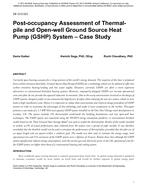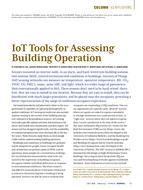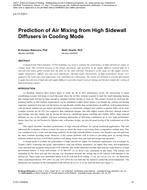Variable capacity technology is a core feature in high efficiency air conditioners available in the residential, ducted market. Residential variable capacity air conditioners are available in a range of Seasonal Energy Efficiency Ratios (SEER), exceeding the federal minimum levels. Energy efficiency program implementers seek to understand the efficiency impact of variable capacity systems for their climates and applications. Additionally, program implementers seek guidance in how to structure their programs based on available industry ratings. This report examines the performance of three variable capacity systems of varying SEER over a range of real-world operating conditions, away from the current standard testing conditions for SEER. The paper provides insight to energy efficiency program implementers on potential efficiency and program structure of variable capacity equipment.
A laboratory assessment was conducted on three residential variable capacity air conditioners with SEERs of approximately 18, 20, and 22. The systems were evaluated under identical laboratory setups and similar real-world operating conditions. The three systems were evaluated over a range of outdoor temperatures, multiple operating levels, and along a practical external static pressure curve. The laboratory results provide cooling capacity and efficiency over the collection of tested conditions. The laboratory results were modeled and compared against a federal minimum baseline SEER system to evaluate their efficiency potential. This report provides a performance and efficiency comparison of the three variable capacity systems of varying SEERs away from the standard SEER testing conditions.
Citation: 2017 Winter Conference, Las Vegas, NV, Conference Papers
Product Details
- Published:
- 2017
- Number of Pages:
- 8
- Units of Measure:
- Dual
- File Size:
- 1 file , 1.6 MB
- Product Code(s):
- D-LV-17-C054


